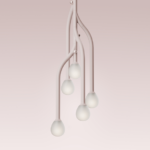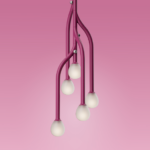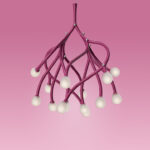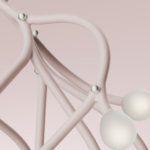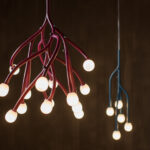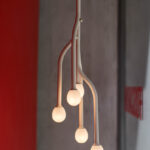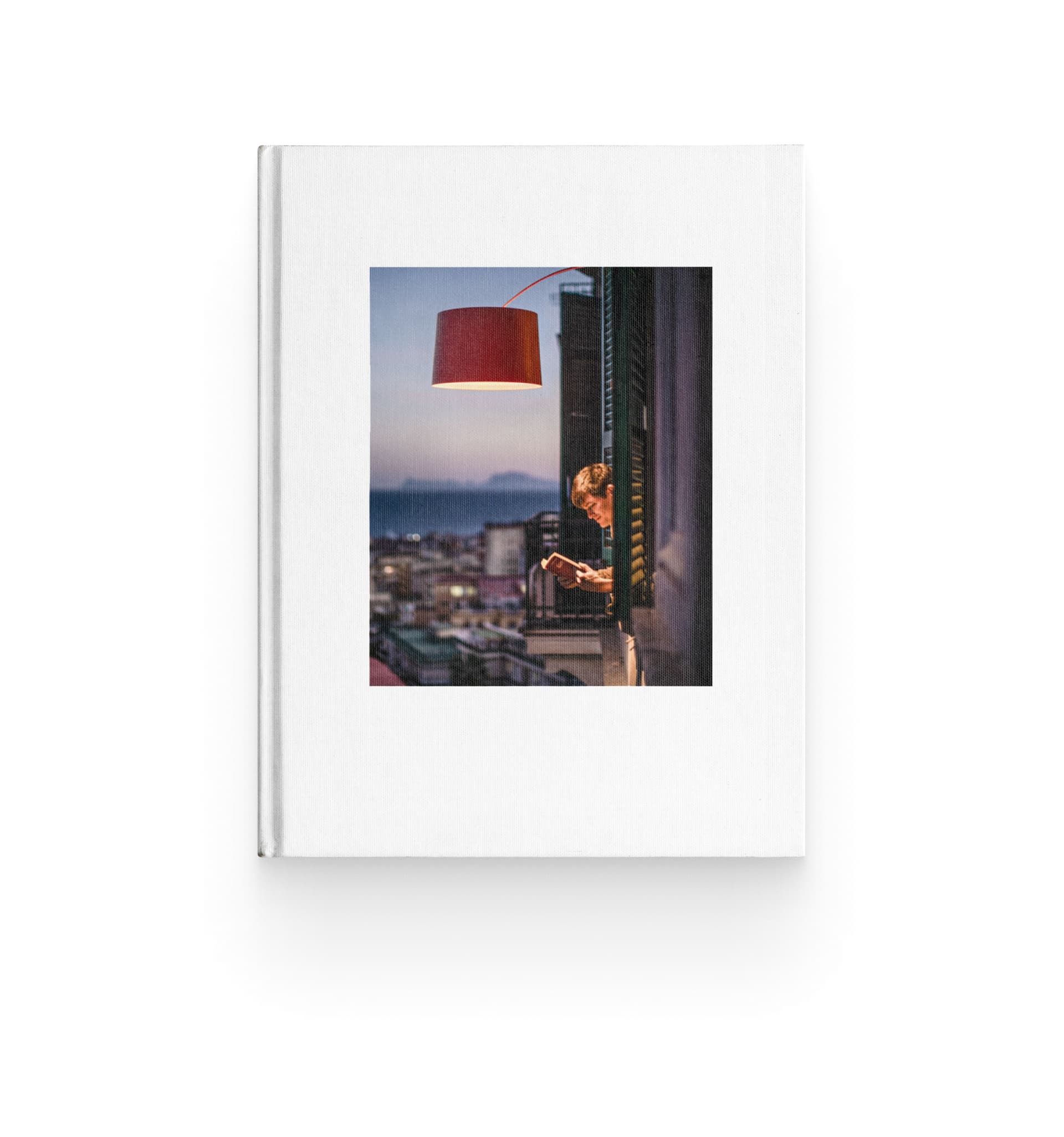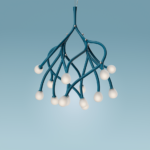
More than a chandelier, Tilia, designed by Francesca Lanzavecchia, is a system conceived as a luminous organism in constant evolution, which develops organically with soft lines and delicate curves, inhabiting space with lightness.
Tilia – from the Latin for linden – has been inspired by the spontaneous, fluid growth of natural forms. It is a sculptural representation of the invisible rules that allow natural structures to develop in space: river deltas, the veins of leaves, coral reefs. Tilia is a project that follows the logic of evolution of natural structures, and the study of mathematical and physical principles, such as the Fibonacci sequence, or fractals and comes to life like a new “luminous botanical species”, rather than an object: a metal structure from which branches emanate with different forms and lengths, culminating in diffusers of opaline frosted borosilicate glass that emit a soft, warm and enveloping glow.
The connections between the arms and the structure, rather than being concealed, become precious details: small contrasting metal spheres, like botanical buds.
Tilia comes in three colours and two different configurations: a more compact and vertical structure, and a wider, more theatrical version, always preserving a balance between lightness and intense presence.

“I like to include input arriving from science, technology and physics, without refraining from creating familiar, intuitive objects. I wanted the chandelier to seem like a spontaneous presence, but at the same time to reveal all of its constructive complexity upon closer observation. We live in a world of perfect objects, while as human beings we are all imperfect and different. An asymmetrical object can feel closer to us, more human. Not all companies will accept asymmetrical products, because they are harder to handle at the level of production. But I believe beauty lies precisely in this imperfection.”
Francesca Lanzavecchia
/ Designer

